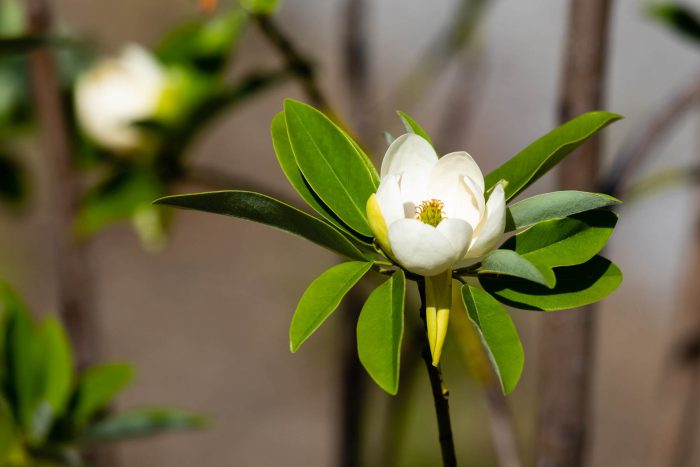Sweetbay Magnolia
Magnolia virginiana
The sweetbay magnolia is a small, semi-evergreen tree with large, creamy white flowers that bloom in early summer. It grows in forested swamps and wetlands throughout most of the Chesapeake Bay watershed.

